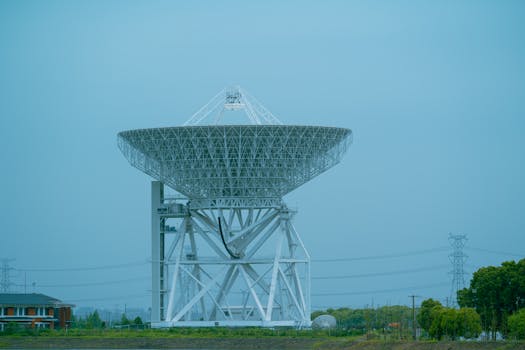
Updates from Above: Essential Insights into the Latest in Satellite Telecommunications
Satellite Telecommunications is an ever-evolving field, with new technologies and innovations emerging regularly. As we continue to rely on satellite communications for global connectivity, it’s essential to stay up-to-date with the latest developments in the industry. In this article, we’ll delve into the latest updates in satellite telecommunications, exploring the advancements in technology, trends, and innovations that are shaping the future of the field.
Introduction to Satellite Telecommunications
Satellite telecommunications refer to the use of artificial satellites in orbit around the Earth to transmit and receive signals, providing communication services to users around the world. The technology has been in use for decades, with the first commercial communications satellite, Intelsat 1, launched in 1965. Today, satellite telecommunications play a vital role in global connectivity, providing services such as broadband internet, television broadcasting, and mobile communications to remote and underserved areas.
Advancements in Technology
Recent years have seen significant advancements in satellite telecommunications technology, with the development of new satellite designs, launch systems, and communication protocols. One of the most notable advancements is the introduction of high-throughput satellites (HTS), which offer faster data speeds and greater capacity than traditional satellites. HTS satellites use multiple spot beams to provide focused coverage of specific regions, allowing for more efficient use of bandwidth and increased connectivity.
Another area of advancement is the development of low-Earth orbit (LEO) satellites, which operate at much lower altitudes than traditional geostationary satellites. LEO satellites offer faster latency and lower costs than traditional satellites, making them ideal for applications such as satellite broadband and IoT communications. Companies such as SpaceX and OneWeb are leading the charge in LEO satellite development, with plans to launch thousands of satellites in the coming years.
Trends and Innovations
The satellite telecommunications industry is also seeing a number of trends and innovations emerge, driven by advances in technology and changing user needs. One of the most significant trends is the growth of satellite-based broadband services, which provide high-speed internet connectivity to remote and underserved areas. Companies such as HughesNet and Exede Internet are offering satellite-based broadband services, with speeds of up to 100 Mbps and higher.
Another trend is the increasing use of satellite communications for IoT applications, such as smart cities, industrial automation, and agricultural monitoring. Satellites offer a reliable and secure way to connect IoT devices in remote areas, where traditional connectivity options may not be available. The use of satellite communications for IoT applications is expected to grow significantly in the coming years, driven by the increasing demand for IoT services and the need for reliable and secure connectivity.
Conclusion
In conclusion, the latest updates in satellite telecommunications offer a glimpse into the exciting future of the industry. With advancements in technology, trends, and innovations emerging regularly, it’s an exciting time for satellite telecommunications. As we continue to rely on satellite communications for global connectivity, it’s essential to stay up-to-date with the latest developments in the field. Whether you’re a industry professional or simply interested in the latest technologies, we hope this article has provided valuable insights into the world of satellite telecommunications.

